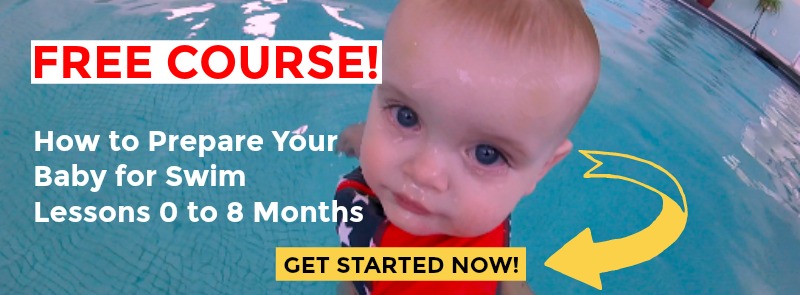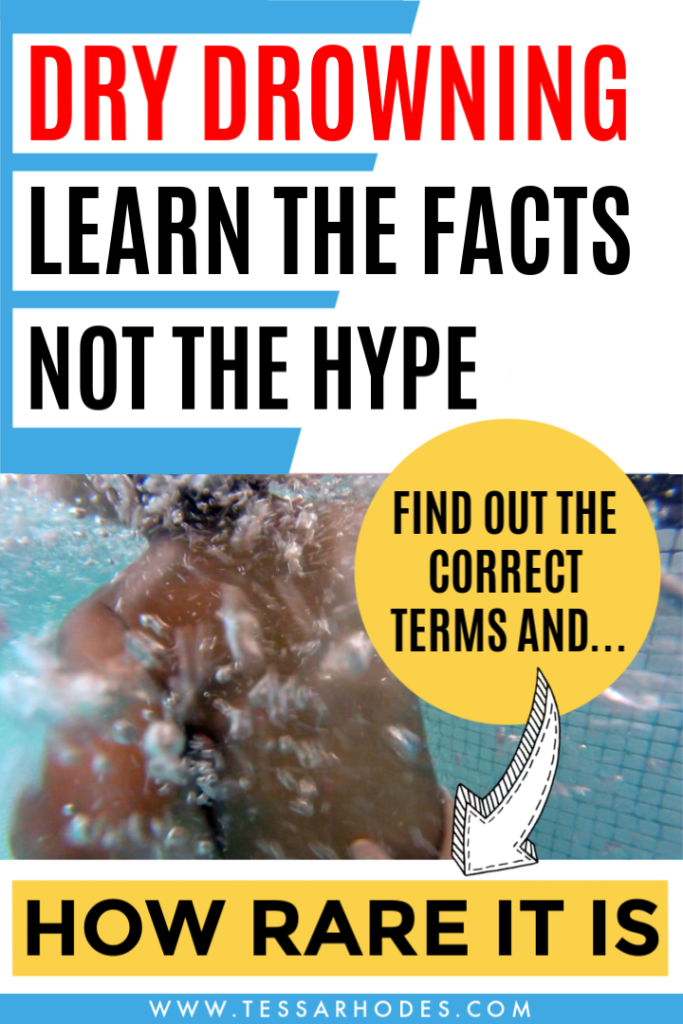How do I know if my child is dry drowning?

A parent wrote to me with this question…
What are the signs of dry drowning? How do we, as parents, know how much water is too much?
– Concerned parent

Dry drowning and secondary drowning, which is also sometimes referred to as delayed drowning, are not accepted medical terms. Here’re the facts. so
Hyponatremia or Water Intoxication
Hyponatremia or water intoxication results when the normal balance of electrolytes in the body is pushed outside safe limits by excessive water intake.
– Wikipedia

It Takes a Lot of Water for It to Be Fatal
So, how much is a lot of water? The recommended daily amount of drinking water for the 6 to 12-month-old baby is two to eight ounces on top of the water they get from breast milk or formula.
It’s doubtful that your baby would accidentally swallow anywhere near two to eight ounces or more of pool water during a swimming lesson or at bathtime.
So, the likelihood of your little one ending up with hyponatremia is very scarce. But in the off chance that your baby swallows a large amount of water (which is unlikely), it can lead to Hyponatremia.
The symptoms of Hyponatremia are vomiting, dizziness, lethargy, confusion, behavioral changes, completely clear urine, and swelling of the face, arms, or legs. If your baby shows these signs, seek medical attention immediately.

Aspiration Pneumonia
In some of these incidents, the child contracted aspiration pneumonia — an infection that develops from water trapped in the lungs. But that isn’t drowning, Dr. Peter Wernicki, member of the American Red Cross Scientific Advisory Council said. It’s a rare condition, he added, and a child with it would show symptoms, including coughing and labored breathing many hours after leaving the water, and parents would know something was wrong.
– Dr. Peter Wernicki

It’s Been So Blown Out of Proportion
How Do I Know If My Child Is Dry Drowning?
So now we believe that anytime a child inhales or swallows a little bit of pool water that it’s life-threatening. It’s not the case.
If your baby ingests or drinks a little bit of water unintentionally, you’ll know because he’ll cough for a few seconds after the incident. Don’t worry; it doesn’t harm your baby. And when or if this happens, remain calm. Your baby looks to you for social referencing. So if you stay calm, he will remain calm.
Remember, it’s only if the coughing lasts for hours and is accompanied by labored breathing that you would have reason to be concerned. so How Do I Know If My Child Is Dry Drowning?

You may have read some stories about children who didn’t show any signs of “dry or secondary drowning” (other than a brief coughing fit) after an incident at the pool and then went to bed that night and never woke up.
Wernicki says, “A child doesn’t (act fine) for eight hours and then die (from drowning).”
How Do I Know If My Child Is Dry Drowning?
To Prevent Hyponatremia, Aspiration Pneumonia or Actual Drowning Do the Following:
- When you swim with your child, stay within arms reach.
- Fence in your pool, spa, and landscape water features.
- Always swim in a lifeguarded area.
- Learn swimming and water safety survival skills.
- Provide close and constant attention to children you are supervising in or near water. so
- Children, inexperienced swimmers, and boaters should wear U.S. Coast Guard-approved life jackets.
- Also, know what to do in an emergency. If a child is missing, check the water first.
- And know when to call 911 and have easy access to reaching or throwing equipment, a cell phone, life jackets, and a first aid kit.
How Do I Know If My Child Is Dry Drowning?
I hope that I have helped to relieve your concerns. Have you ever known a single person who has succumbed to hyponatremia, or aspiration pneumonia? I don’t know anyone or anyone who knows anyone.
We’ve all inhaled or swallowed pool water when we’ve been swimming, and if you’re reading this, then you survived.

Leave a Reply